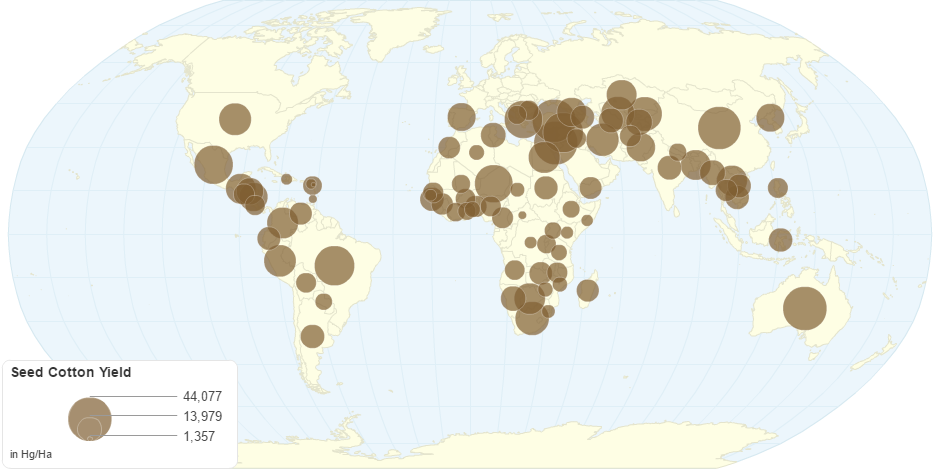This chart shows Seed Cotton Yield by Country.
Cottonseed is the seed of the cotton plant.The mature seeds are brown ovoids weighing about a tenth of a gram. By weight, they are 60% cotyledon, 32% coat and 8% embryonic root and shoot. These are 20% protein, 20% oil and 3.5% starch. Fibers grow from the seed coat to form a boll of cotton lint. The boll is a protective fruit and when the plant is grown commercially, it is stripped from the seed by ginning and the lint is then processed into cotton fibre.
For unit weight of fibre, about 1.6 units of seeds are produced. The seeds are about 15% of the value of the crop and are pressed to make oil and used as ruminant animal feed. About 5% of the seeds are used for sowing the next crop. The proper method to test moisture in seed is by taking sample of 100 gram & put it simply in Meters & than read the meter. The outer coverings of the cottonseed, known as cottonseed hulls, are removed from the cotton kernels before the oil is extracted.
Cottonseed hulls serve as an excellent source of feed for the livestock as they contain about 8% of cotton linters which have nearly 100% cellulose in them. They require no grinding and easily mix with other feed sources. The seed oil extracted from the kernels, after being refined, serves as a good edible and nutritious food. It can be used as a cooking oil, salad dressings. It is also used in the production of shortening and margarine.
Cotton grown for the extraction of cottonseed oil is one of major crops grown around the world for the production of oil, after soy, corn, and canola.
Whole cottonseed serves as a highly digestible feed which also improves the reproductive performance in livestock. Pima cottonseed, which is free of linters by default, and delinted cottonseed are other types of cottonseed feed products.
9 years ago

